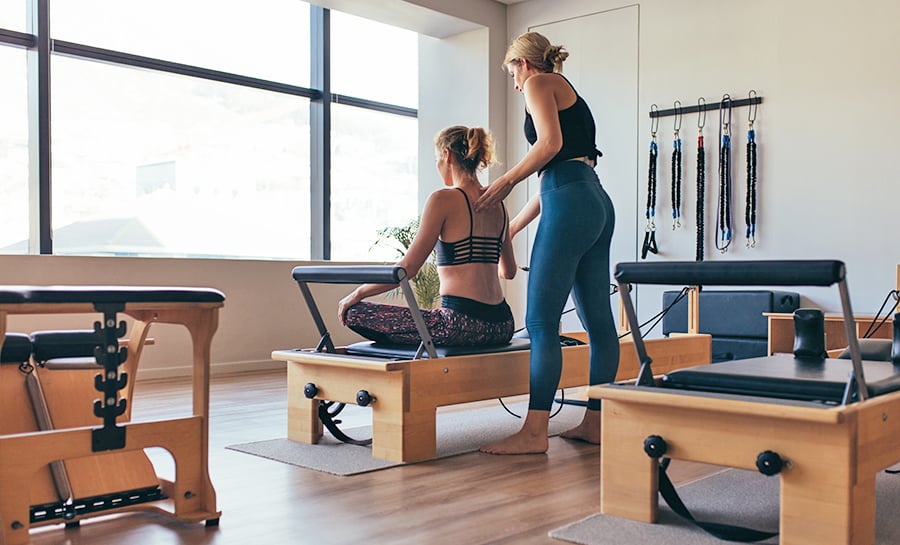
Sensory rooms are quickly becoming an important element of learning space design, and for good reason: They can prove to be effective at helping students with anxiety or sensory processing issues to calm down and relax, so that students are better able to focus and learn.
Some children, such as those on the autism spectrum, can easily become overwhelmed by touch, movement, sights, or sounds. Spending time in a calming sensory room might help them build intrinsic self-regulation skills to support better focus, attention, and behavior.
However, a sensory room isn’t just for students with special needs. The prevalence of anxiety is escalating across all student populations during the COVID-19 pandemic. A calming sensory room offers a quiet space to regroup, which might help students manage their responses to stress.
This article will examine what a sensory room is and why it’s important, especially in the era of COVID-19. It will also offer ideas for creating a calming sensory room in your own school.
Why Create a Sensory Room
The latest data from the Centers for Disease Control show that one in 54 children has been identified with autism spectrum disorder, a number that continues to rise. Many students on the autism spectrum have sensory processing issues that make them overly sensitive to touch, light, and sounds.
Sensory processing disorders can affect other students as well, not just those on the autism spectrum. In fact, research suggests that between 5 percent and 16 percent of children exhibit symptoms.
Time in a calming sensory room, incorporated as part of a regular school schedule, may give students opportunities to recharge and regroup. In turn, this helps promote intrinsic self-regulation, which may reduce the likelihood that students will experience meltdowns and other inappropriate behaviors as they learn to advocate for their own sensory needs.
A sensory room often includes gentle lighting and soothing sounds, along with furniture that helps define spatial boundaries (such as chairs with higher backs and sides) to help children feel secure in their physical space and sensory tools that help promote self-regulation.
Students can’t learn if they’re upset, distracted, anxious, or overstimulated. A sensory room might help them regulate their emotions, so they can focus more effectively. In fact, a study of how sensory rooms in Muskegon County, Michigan, affected students’ readiness to learn found that students were 56 percent more engaged in classroom activities after using a sensory room.
Aside from helping students focus, the stimulating environment of a sensory room may heighten awareness, provide a sense of security and comfort, improve creativity, promote mental and physical relaxation, and even decrease aggressive behaviors.
Not Just for Students with Special Needs
Although many people think of sensory rooms as an intervention aimed primarily at special-education students, in reality any student may benefit from spending time in a sensory room.
As a result of COVID-19, it’s possible that a large number of students (and not just those with IEPs!) might need assistance with managing their emotions and coping with anxiety or trauma when schools reopen. Sensory rooms are one strategy that may help.
Even before the pandemic, a growing percentage of students were experiencing anxiety: The Washington Post reports that the number of anxiety diagnoses among youth ages 6 to 17 rose by 20 percent in the five-year period from 2007 to 2012.
The coronavirus pandemic is only escalating this issue. A survey from Common Sense Media and SurveyMonkey found that 61 percent of teens are worried they or someone in their family will get sick; 63 percent are concerned about their family’s ability to earn money; and 42 percent feel lonelier than usual.
A sensory room might help even older students calm down when they’re feeling anxious. A separate Washington Post story indicates that colleges are giving students calming sensory spaces to relax and decompress as well.
Sensory rooms fit in well with the trend toward Universal Design for Learning (UDL), a framework for meeting the needs of all learners. UDL calls for more inclusive learning environments that provide multiple means of engagement, expression, and representation to help all students succeed. By helping students calm down, self-regulate, and focus, sensory rooms aptly meet this goal.
What a Calming Sensory Room Might Include
The design of a sensory room is limited only by your imagination, and each school might equip its sensory spaces a little differently. However, here are some ideas to help guide you.
Soothing lights, sounds, and sights. Soothing visual or auditory inputs are common elements of a calming sensory room. For instance, Cozy Shades can provide muted, warmer lighting that helps reduce the harsh glare of overhead fluorescent lights. Nature sounds, including water-related noises such as ocean waves or a babbling brook, can help put students at ease. Bubble tubes are also great for quiet spaces, because they give students something soothing to watch that helps promote a calming, positive vibe.
Beanbag chairs and other comfortable seating. Beanbag chairs allow students to sink in and feel enveloped in their surroundings, which can be comforting for students. They’re also easy to move and keep clean, which is an important factor amid COVID-19. Other sensory seating options include cocoon swings, couches, and more.
Fidget tools and other focus aids. Squishy balls and other fidget tools serve a number of key purposes. Besides helping to calm students, they can help support fine motor skills with strength and dexterity — while also improving students’ focus and attention. This Scientific American article explores the cognitive benefits of fidget tools in more detail.
Weighted items and other deep touch pressure input. Sensory solutions that offer deep touch pressure input, such as a snuggle wrap or soft weighted lap pad, blanket, or cuddly companion, may help provide additional self-regulation for calming.
A Valuable UDL Strategy
A sensory room can help both general and special-education students of all ages with self-regulation to promote improved focus and attention, while fostering healthy learning.
By making learning environments more inclusive and supportive of all students’ needs, sensory rooms are a valuable UDL strategy — and they can be an effective component of a Social and Emotional Learning (SEL) or Trauma-Informed Care approach to managing anxiety and stress.






Great Information sharing .. I am very happy to read this article .. thanks for giving us go through info.Fantastic nice. I appreciate this post.